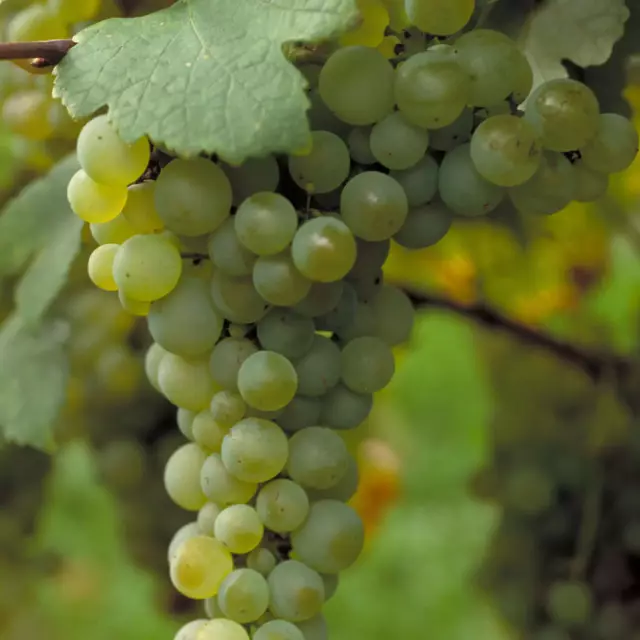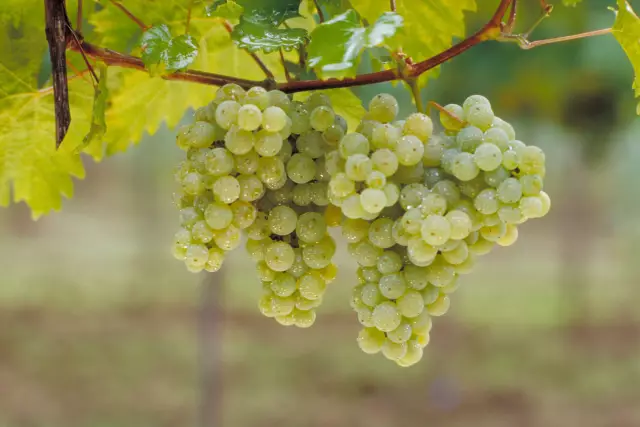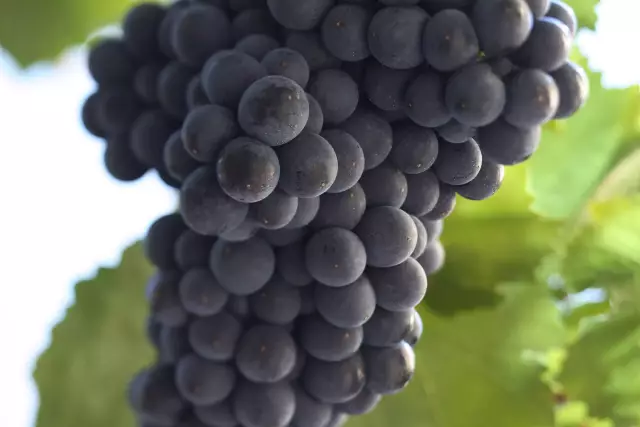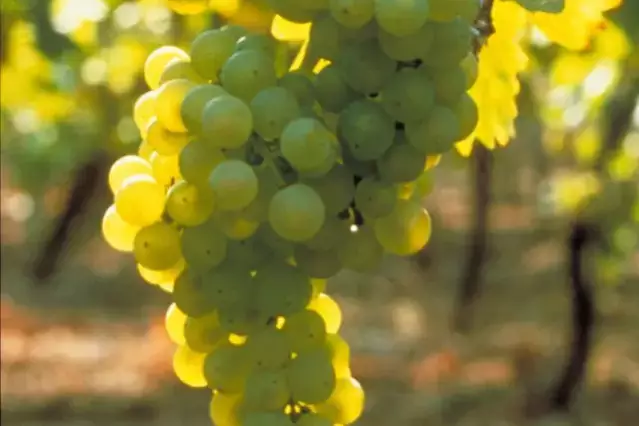Gutedel

Known as Chasselas in France and Fendant in Switzerland, this ancient white variety is both a popular table grape and a wine grape.
Facts
-
1.048 ha
Hectares planted vinyard area 2023
-
5.000 years
Presumed age of the grape variety
Cultivation
Chasselas are content with averagely good sites, but they need to be protected from cold winds. Deep, not too dry soils are preferred, but the Gutedel also ripens on shallow rock weathering and limestone soils. The variety is relatively susceptible to peronospora, red burner, grape berry moth and stem rot. At medium-early maturity and average must weight, 100 hectolitres per hectare can be achieved on fertile sites. Higher quality allows for waiting in autumn, as the berries are not very susceptible to rot.
Significance
As a tasty table grape, the white (and the red) Gutedel is cultivated worldwide. For wine production, it plays a dominant role in French-speaking Switzerland, in Southeastern Europe the "Mädchentraube" is considered a Gutedel variety, and there are also a few vineyards in Alsace. In Germany, Gutedel cultivation is concentrated almost exclusively in the Markgräflerland region between Freiburg and the Swiss border. There, 1,048 hectares of vineyards (2023) are planted with the oldest cultivated vine. The South Baden speciality has maintained its cultivation area for decades. In addition, there are almost 22 hectares of vineyards in Saale-Unstrut that are planted with Gutedel.
Vinification and taste
The fresh wines taste best when drunk young; higher qualities have less ageing potential due to their distinctly low acidity. The young wines are often drunk with a morning pint or with a snack. Fine Chasselas wines are the perfect accompaniment to light cuisine such as dishes with sea fish or delicate cheeses. The mild nature of the wines also predestines Chasselas for enjoying with friends.
The special charm of Chasselas wines lies in the rather tasteless character of the grape variety. This means that the respective terroir, soil, microclimate and location of the vineyard are unmistakably expressed in each wine. Most Gutedel wines are made into light, drinkable wines. But there are an increasing number of specialities in the Prädikatswein range; dry wines that are sometimes given a particularly mild character through biological acid reduction. Chasselas wines are classified as very mild in acidity.
History
In 2000, the Markgräflerland region in the south of Baden celebrated a very special anniversary: the Gutedel grape variety native to the region was (approximately) 5,000 years old. It is thought to have originated in Palestine, and its cultivation on the Middle Nile 5,000 years ago is considered to have been vouched for. It is assumed that it was passed on to the Romans and Greeks by the seafaring Phoenicians. At the beginning of the 16th century, chasselas arrived in French growing regions. Southwest of Mâcon, the vines are said to have been cultivated near the village of Chasselas - an explanation for the Chasselas synonym that is still commonly used in French-speaking wine-growing regions today. What is certain is that Gutedel was planted on German soil at the beginning of the 17th century, first in Württemberg and Franconia, a century later in Saxony and south of Freiburg, today's Markgräflerland. It was not until the activities of Margrave Friedrich von Baden, who imported planting material from Vevey, a well-known wine-growing community on Lake Geneva, in 1780, that Chasselas became more widespread.
At a glance
- The grape variety is thought to have originated in the Middle East, with cultivation on the Middle Nile 5,000 years ago.
- At the beginning of the 16th century, the grape variety arrived in French growing areas near Chasselas.
- Prefers soils that are not too dry
- Medium-early maturity with average must weight
- Aroma: tasteless character that expresses the terroir
Where is the origin of the chasselas thought to be?
The origin of the chasselas is believed to be in Palestine.
with wild duck breast, porcini mushrooms and glazed chestnuts Herb salad
with wild duck breast, porcini mushrooms and glazed chestnuts
- 150 Gramm Wildkräuter
- 4 EL Olivenöl
- 2 EL Balsamessig
- 8 Stück Wildentenbrüste (a 100g)
- 2 EL Sonnenblumenöl
- 4 EL Honig
- 1 EL Thymian
- 200 Gramm Steinpilze
- 20 gekochte Maronen
- 100 ml Apfelsaft
- 2 El Zucker
- nach Belieben Salz & Pfeffer
Clean, wash and pat dry the wild herbs. Marinate with olive oil and balsamic vinegar and season with salt and pepper.
Preheat the oven to 220°C top and bottom heat. Season the wild duck breasts with salt and pepper, sear on the meat side in a pan with sunflower oil and cook in the preheated oven for about 8 minutes on the skin side. Remove the duck breast, brush the skin side with honey and thyme and roast for another 2 minutes on a high heat until crispy.
Clean the porcini mushrooms and cut into slices. Fry in a pan in oil on both sides, remove and keep warm. Caramelise the sugar in the pan, deglaze with the apple juice and simmer until the caramel has dissolved. Add the chestnuts and add a little more apple juice if necessary.
- Pinot Blanc (trocken)
- Gutedel (trocken)

Wineries Wineries in the area
-
Show
Weingut Engler




